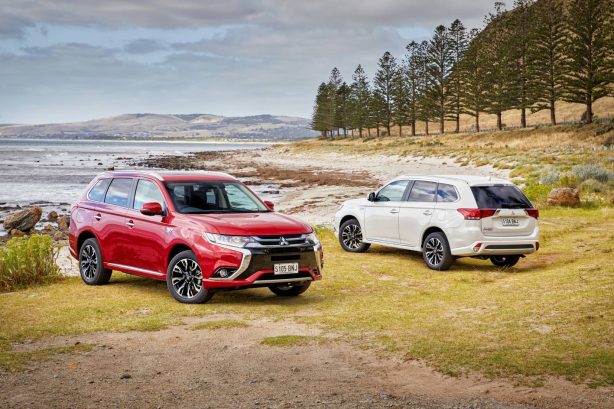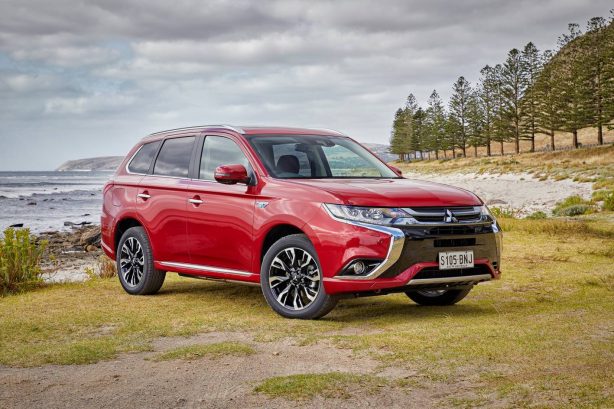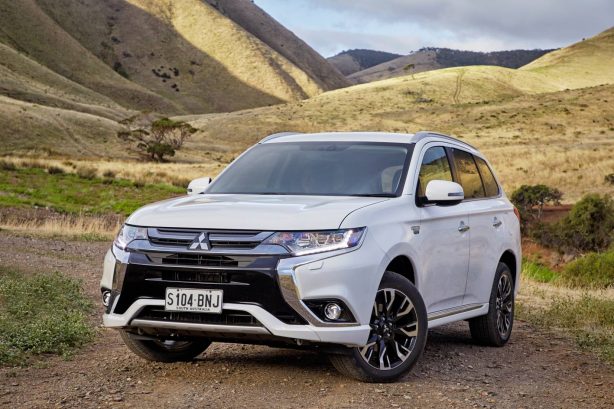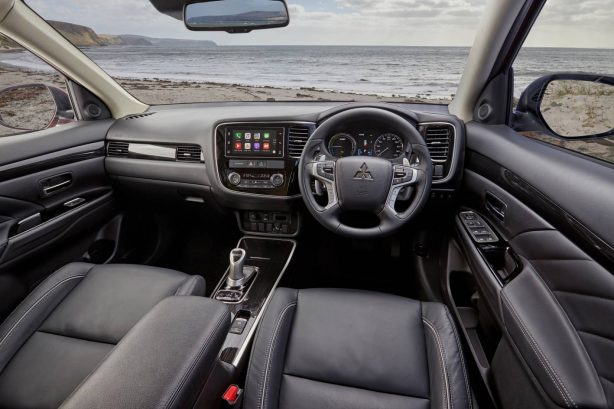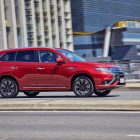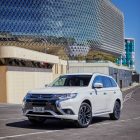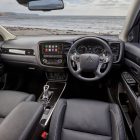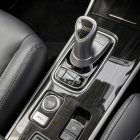The updated 2017 Mitsubishi Outlander PHEV has arrived with a revised design, new technology, increased refinement and additional fast charging flexibility.
Adopting styling changes from the Model Year 2017 Outlander range, the PHEV variant sports revised front and rear fascia with Mitsubishi’s “Dynamic Shield” front grille, new front and rear bumpers and redesigned side sills.
Retaining the standard model’s interior design and cabin dimensions, Mitsubishi says the Outlander PHEV was developed from the ground up to be driven by either an internal combustion engine or hybrid technology and as a result there are no compromises in terms of packaging, practicality or driving dynamics.
The Outlander PHEV is available in two specification grades, LS and Exceed, both come with new features such as Mitsubishi’s Smartphone Link Display Audio with Apple CarPlay and Android Auto integration and Digital Radio (DAB+), electric folding and heated exterior mirrors, LED headlamps with auto levelling and an electronically controlled park brake with Auto Hold function. Also new is a DC fast charging socket capable of recharging the battery to 80% capacity in around 25 minutes.
New safety features available as standard on the range-topping Exceed include, Adaptive Cruise Control, Forward Collision Mitigation with human detection, Multi Around Monitor, Auto High Beam, Lane Departure Warning, Blind Spot Monitor, Lane Change Assist, Rear Cross Traffic Alert, and an Ultrasonic Mis-acceleration Mitigation System.
For 2017 Mitsubishi introduces a new EV Priority Mode across all variants. The new EV switch is located below the 4WD button and once activated, it allows the driver to operate the vehicle in EV mode without the engine starting, provided there is sufficient charge in the batteries.
The electronic parking brake’s auto hold button function which, when activated, holds the vehicle in traffic or on an incline the same way a handbrake would, allows the driver to release the footbrake.
Highlights of the updated interior include a redesigned steering wheel, new accent trim, improved seating comfort with premium finishes and materials to give the cabin a more “sophisticated” feel.
Elsewhere, improvements have been made to noise levels, ride, handling and throttle response. Ride quality and comfort have been enhanced with increased structural rigidity in the body, revised suspension design, new Electric Power Steering calibration and reduced noise, vibration and harshness (NVH) throughout the SUV.
The 2017 Outlander PHEV retains the pre-facelift model’s hybrid drivetrain. It consists of twin 60kW electric motors front and rear, a 12kWh lithium ion drive battery, 70kW output generator, lightweight front transaxle assembly and a 87kW/186Nm 2.0-litre four-cylinder MIVEC petrol engine to significantly extend PHEV’s driving range when the batteries run out of energy.
Pure EV range is said to have gained another 4km to a maximum of 54km, while overall fuel economy has been reduced from the previous 1.9L/100km to 1.7L/100km on the combined cycle.
Mitsubishi Motors Australia Executive Director of Marketing Tony Principe said the new Outlander PHEV builds on the model success in this market.
“The Outlander PHEV is now more stylish, refined and has increased practicality with the addition of a DC fast charge socket capable of recharging the battery to 80% capacity in around 25 minutes,” said Mr Principe.
“Of course, if owners can’t find a recharging station, they don’t have to change their plans as the Outlander PHEV is not limited by the availability of recharging infrastructure.”
2017 Mitsubishi Outlander PHEV pricing (excluding on-road costs)
| Outlander PHEV LS | $50,490.00 |
| Outlander PHEV Exceed | $55,490.00 |
Mitsubishi Outlander PHEV Driving Mode explained
EV – Series – Parallel
The PHEV Operating System automatically selects from three driving modes – EV, Series Hybrid, and Parallel Hybrid – with no driver intervention required.
All modes are engaged alternatively, with the PHEV Operating System shifting constantly between them back and forth seamlessly in a split second, according to battery level as well as driving conditions, with a bias to return to EV Mode as soon and as often as possible.
Pure EV Mode
- Whatever the circumstances, the PHEV Operating System will always start the car in this « Pure EV Mode » where driving is electric-only :
- The car is powered by both front & rear motors (i.e. permanent electric 4WD)
- The energy is sourced from the traction battery
- The maximum speed in EV mode is 120 km/h (where legal)
- Outlander PHEV offers an appreciable 54 km driving range in Pure EV Mode i.e, within the average daily distance for most drivers. Individual driving style and therefore its impact on PHEV Operating System’s automatic selection of Modes may translate in either shorter but also longer EV range.
Series Hybrid Mode
- The car is still powered by its front & rear motors (i.e. permanent electric 4WD) :
- The ICE is automatically engaged solely to run the generator, in order to charge the battery and/or provide up to 60kW additional drive power « on-the-go »(it also stops automatically)
- In case of sudden power demand (above the 60 kW supplied by the battery) such as passing or driving uphill, all situations interpreted the PHEV Operating System as a power drain, to be compensated.
- The system is biased to switch back to Pure EV Mode as often/soon as possible
- The ICE is also punctually activated to keep the catalytic converter in optimum condition
Parallel Hybrid Mode
- The ICE being inherently more efficient at higher speeds than the electric motors, it then takes over as primary motive power, driving the front wheels via the Multi-Mode front Power Drive Unit :
- Notwithstanding, the front & rear motors are still in motion to assist seamlessly the ICE (i.e. still permanent electric 4WD)
- As for the two other modes, « Parallel Hybrid » is automatically activated for steady high power demand such as long distance motorway cruising.
- The system is biased to switch back to « Series hybrid Mode » (or « Pure EV Mode » below 120 km/h – where legal) as often/soon as possible
- The ICE is also engaged to run the generator, in order to charge the traction battery using surplus torque
 ForceGT.com Car News, Car Reviews, Video Reviews, Tuning and much more.
ForceGT.com Car News, Car Reviews, Video Reviews, Tuning and much more. 